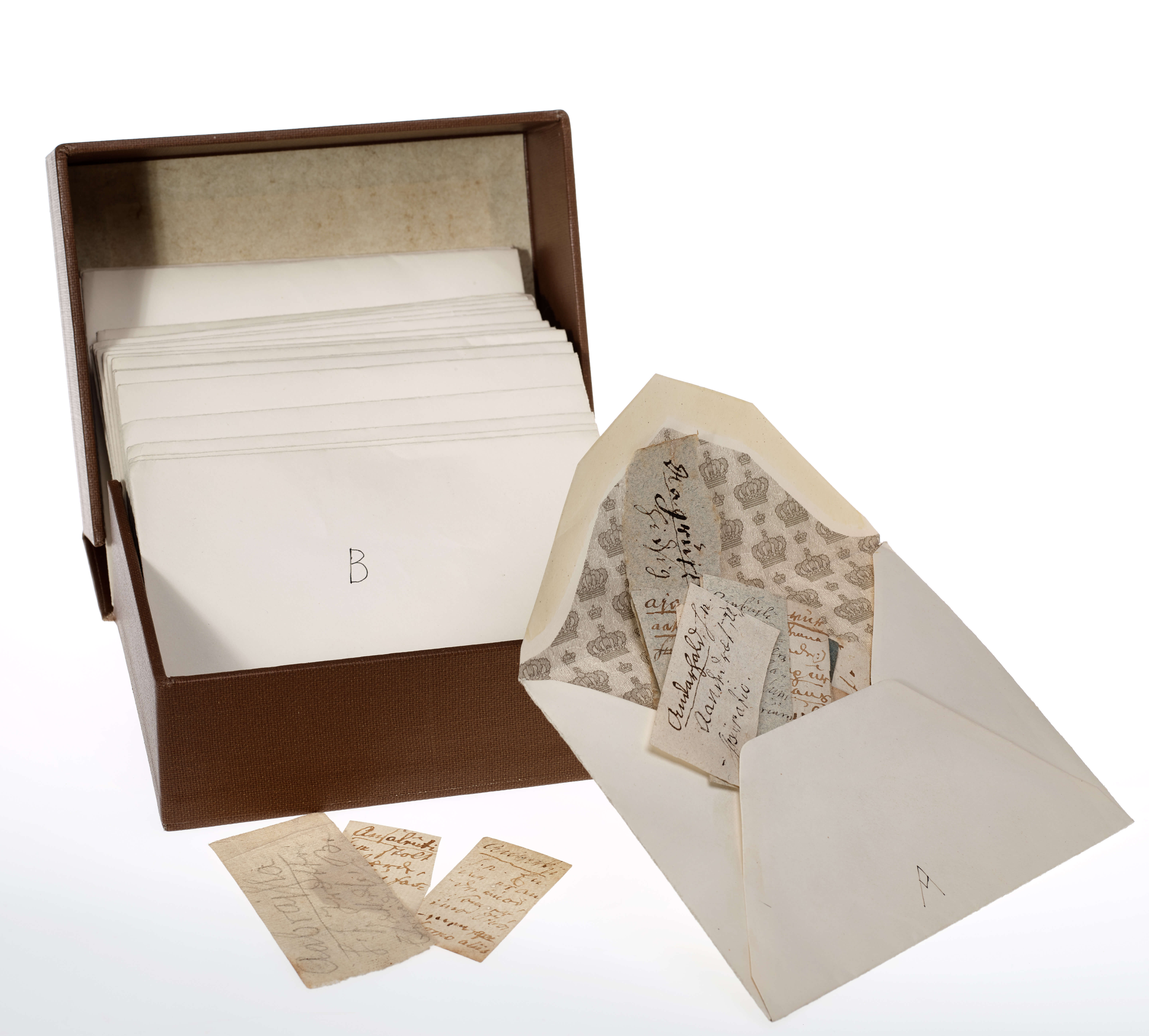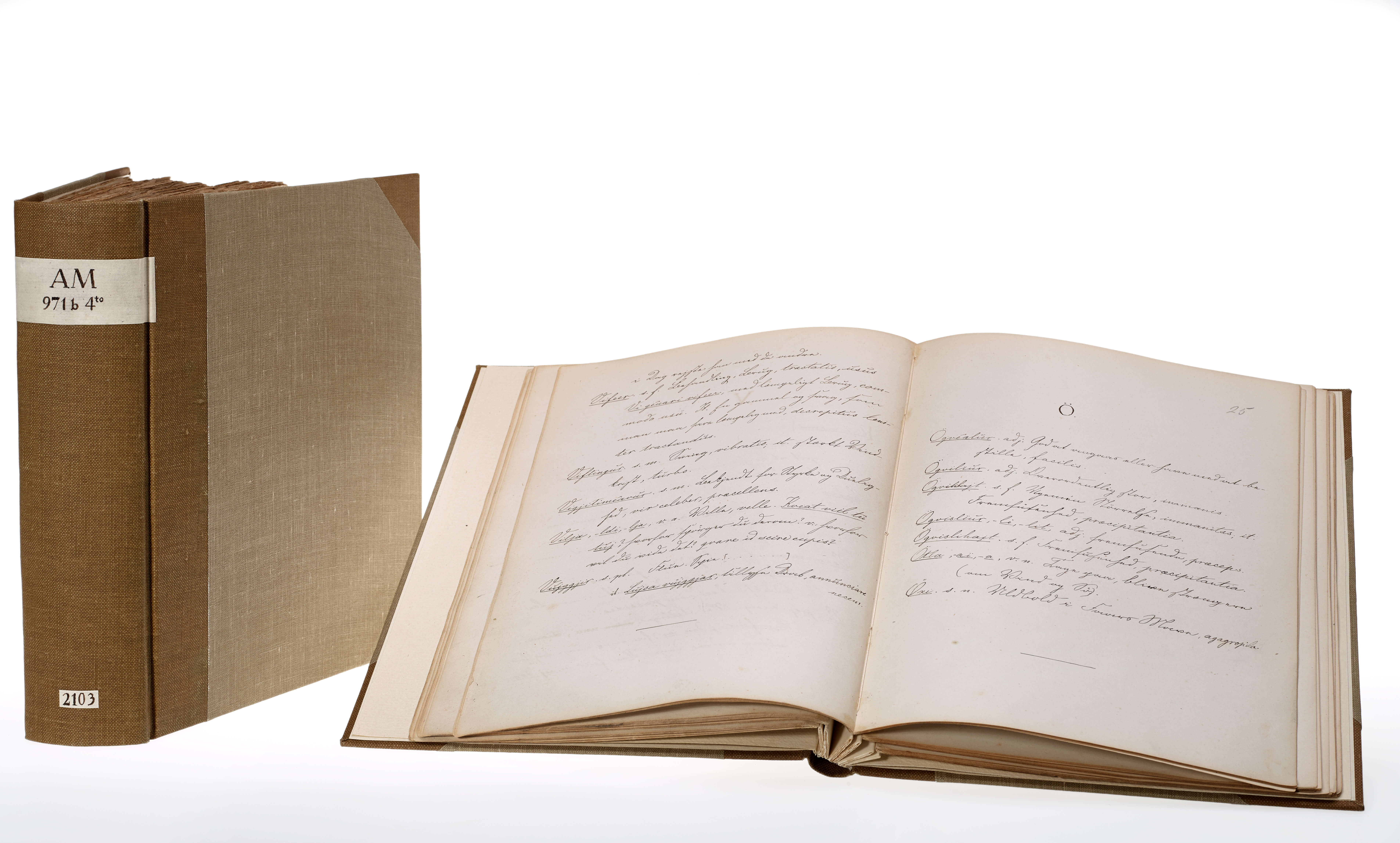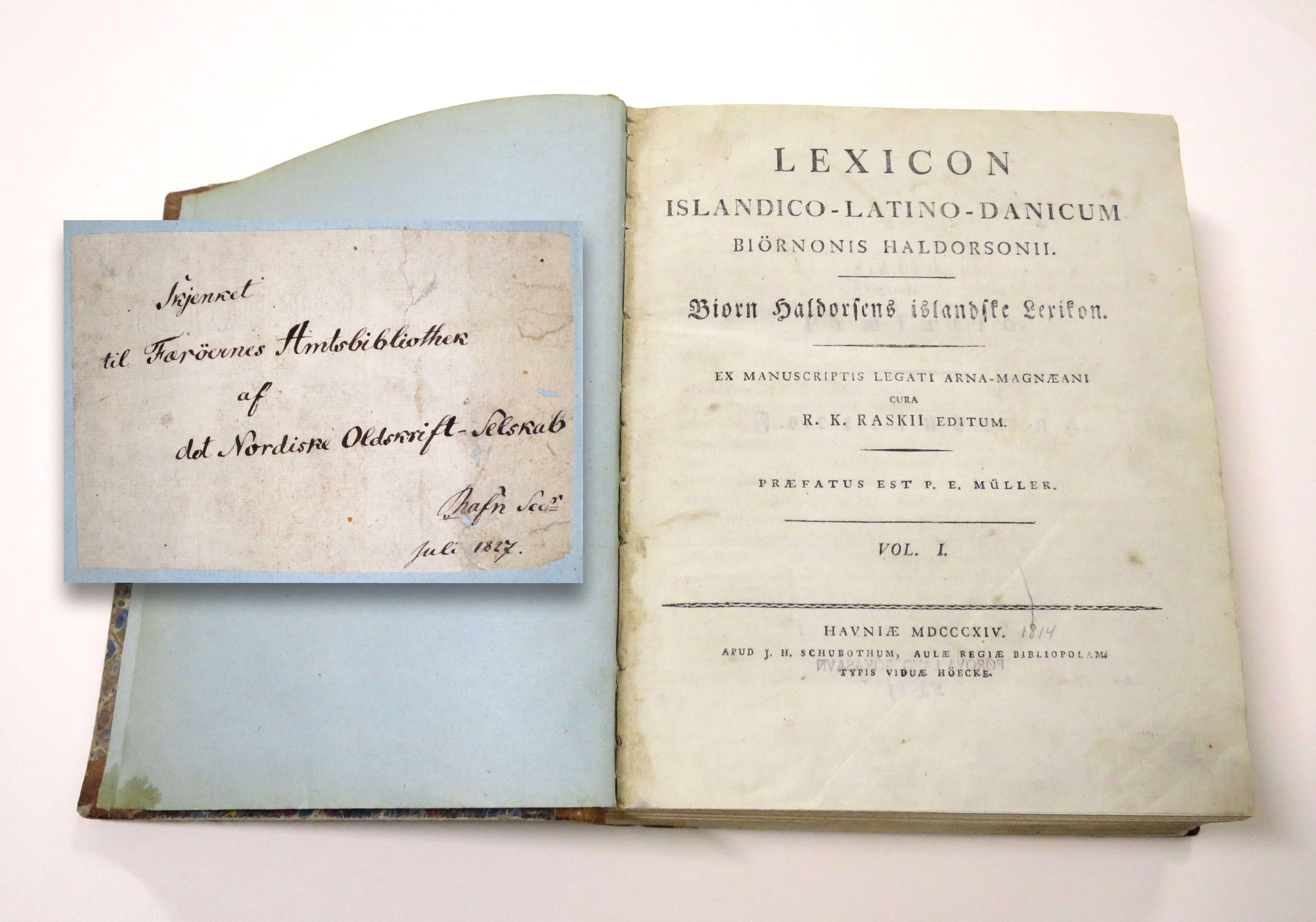One final dictionary from the first Faroese lexicographer
The Faroe Islands’ first lexicographer kept producing manuscripts of his dictionary until his death on 14 February 1824. His final dictionary is today housed at the Arnamagnæan Collection.

Today marks two hundred years since the Faroe Islands lost their first lexicographer, Jens Christian Svabo.
Born in 1746 in Miðvágur on the island of Vágar, J. C. Svabo grew up on the Faroe Islands but moved to Denmark in 1765 to study at the University of Copenhagen. While still a student living in the dormitory Regensen, he completed the first of what would be many manuscripts containing a dictionary, which he called An Attempt at a Dictionary or Word-list of the Faroese Langauge. The manuscript, today housed at the Royal Library in Copenhagen with the shelfmark NKS 1952 4to, is self-dated to 18 June 1773, making it the earliest manuscript in Modern Faroese.
Over the course of the next five decades Svabo continued to produce manuscripts of a Faroese dictionary. He is known to have produced at least seven while still in Copenhagen, of which five still survive.
In 1800 Svabo left Copenhagen and returned to the Faroe Islands, where he lived the remainder of his days in the capital Tórshavn. While there, he continued working on his dictionary of the Faroese language. The final manuscript in Svabo’s hand, AM 971 4to, contains 558 pages of dictionary entries from A (the letter) to Øvutur (øvugtur “reversed”).
A prestigious manuscript for a prestigious language
At the time when Svabo lived, the Faroese language was not used in writing. Like Iceland, the Faroe Islands were inhabited by Norwegian settlers during the landnám period beginning in the ninth century. The language of the settlers, Old West Norse, would eventually develop into Faroese, and already from the earliest documents from or related to the Faroe Islands written in Old West Norse we can find traces of Faroese developments.
Over time, however, Old West Norse would be replaced as the written language of the Faroe Islands. Following the personal union between Denmark and Norway in 1380, the Danish crown began exerting more power over the North Atlantic colonies, and the written language of the Faroe Islands shifted to Danish. With the Reformation, which arrived on the Faroe Islands around 1540, Danish also became the language of the church.
As a spoken language under the shadow of Danish, Faroese was in danger of disappearing completely. In the introduction to his first dictionary manuscript, Svabo writes of his intention to save what he could from the ruins of the language by recording its words. By giving definitions in both Danish and Latin, Svabo was able to introduce a learned audience to the treasure trove of the Faroese lexicon.
However, it was not enough simply to write down all the words he knew. As there was no written standard for the Faroese language, Svabo needed to invent one himself. He writes in the same introduction that he followed the rule to write as you speak. This makes Svabo’s spelling vastly different from the modern standard orthography for Faroese, which is based more on etymology than on pronunciation.

All of Svabo’s dictionary manuscripts were produced as prestige items, intended to grace the finest libraries of Denmark. He most often used a high-quality Dutch paper from the papermaker J. Honig & Zoonen and wrote in a neat script in a well-defined area, leaving wide margins.
Svabo’s final dictionary manuscript resembles these other manuscripts the lexicographer produced as prestige items. The entire manuscript is written within a clearly defined writing area (140 x 100 mm) with 17 lines of text per page. Faroese headwords are underlined and followed by grammatical information such as part of speech and definitions in both Danish and Latin. Svabo writes using two different scripts, depending on language: Faroese and Danish are both written in a Gothic cursive, while Latin definitions and grammatical information are written in Antiqua.
A lexicographer’s work is never done
Svabo’s final dictionary contains much more than the 558 pages which make up the main manuscript AM 971 a 4to. In the years following he also produced 8 appendices, mostly containing words which were not yet in the dictionary itself. (Today these appendices are listed separately as AM 971 b 4to.)

One of the appendices is a list of personal names used on the Faroe Islands. Here we find many familiar names such as Jøgvan, Sjûrur and Mêalan. At times Svabo gives the Danish equivalent to the name as in Fredrik for Faroese Frujrikur. Next to the Faroese name Tormêavur, Svabo adds the Icelandic equivalent Thormodr (i.e. Þórmóður).
A list of names is still included in the official Faroese dictionary today, where we can still find the names Jógvan, Sjúrður, Malan, Fríðrikur and Tormóður.
Even with all the appendices, Svabo was not satisfied with his collection of Faroese words. A further 342 slips of paper contain even more words and definitions which never made their way into an appendix. These scraps of paper are still preserved and today contain the shelfmark AM 971 d 4to. In 1875 the Danish philologist Jørgen Bloch copied all of these entries into a separate manuscript now held together with the rest of Svabo’s dictionary with the shelfmark AM 971 c 4to.

Swapping dictionaries
Svabo’s intention had been to sell his dictionary in Copenhagen. He sent a sample of his work, containing entries from the letter M, to the Danish capital in the hopes that a buyer could be found – today this sample is preserved at the Danish National Archives. Unfortunately, no offers were made, and Svabo was never able to sell his final dictionary manuscript in his lifetime.
Three years following Svabo’s death, his brother-in-law, the sheriff Hammershaimb (grandfather of the famous Faroese philologist V. U. Hammershaimb) sent the dictionary together with the appendices and loose slips to the Society of Nordic Antiquities in Copenhagen. (This was before the society received royal patronage.) In exchange for this valuable handwritten work, the Antiquities Society sent a printed dictionary to the Faroe Islands.

According to the Society’s own annual report from that same year, the choice of what to send to the Faroe Islands in exchange for Svabo’s dictionary was clear: The Faroese population was beginning to look to the neighboring language Icelandic for inspiration on how to develop a written standard, but lacked the appropriate tools. To help them with this endeavor, the Society sent Björn Halldórsson’s Icelandic-Danish-Latin dictionary, edited by Rasmus Rask and published in 1814.
The printed dictionary was given to the newly-founded Faroe District Library, today the National Library of the Faroe Islands, where the book is still held today.

Topics
Contact
Seán Vrieland is associate professor at the Arnamagnæan Collection.
Telephone: +45 3533 7566
sean.vrieland@hum.ku.dk
Bibliography
Matras, Christian (ed.) 1966-1970. Dictionarium Færoense. Færøsk-dansk-latinsk ordbog af J. C. Svabo. 2 Vols. Copenhagen: Munksgaard.
Vrieland, Seán D. 2021. Breaking the silence: The rebirth of Faroese manuscript culture. In M.J. Driscoll and N. Mac Cathmhaoil (eds.) Hidden harmonies: Manuscript and print on the North Atlantic fringe, 1500-1900. Copenhagen: Museum Tusculanum, 405-434.
Funding
This entry of Manuscript of the Month was produced in connection with the research project Tú skalt biðja um eitt reisipass: Digital Repatriation of Faroese Manuscripts funded by the Faroese Research Council, Augustinusfonden, Aage og Johanne Louis-Hansens Fond and Dronning Margrethe og Prins Henriks Fond.
Contribute to Manuscript of the Month
Have something to say about one or more manuscripts in the Arnamagnæn Collection? Contribute to the column Manuscript of the Month to get your research out there! Write to Seán Vrieland (sean.vrieland@hum.ku.dk) for more details.
